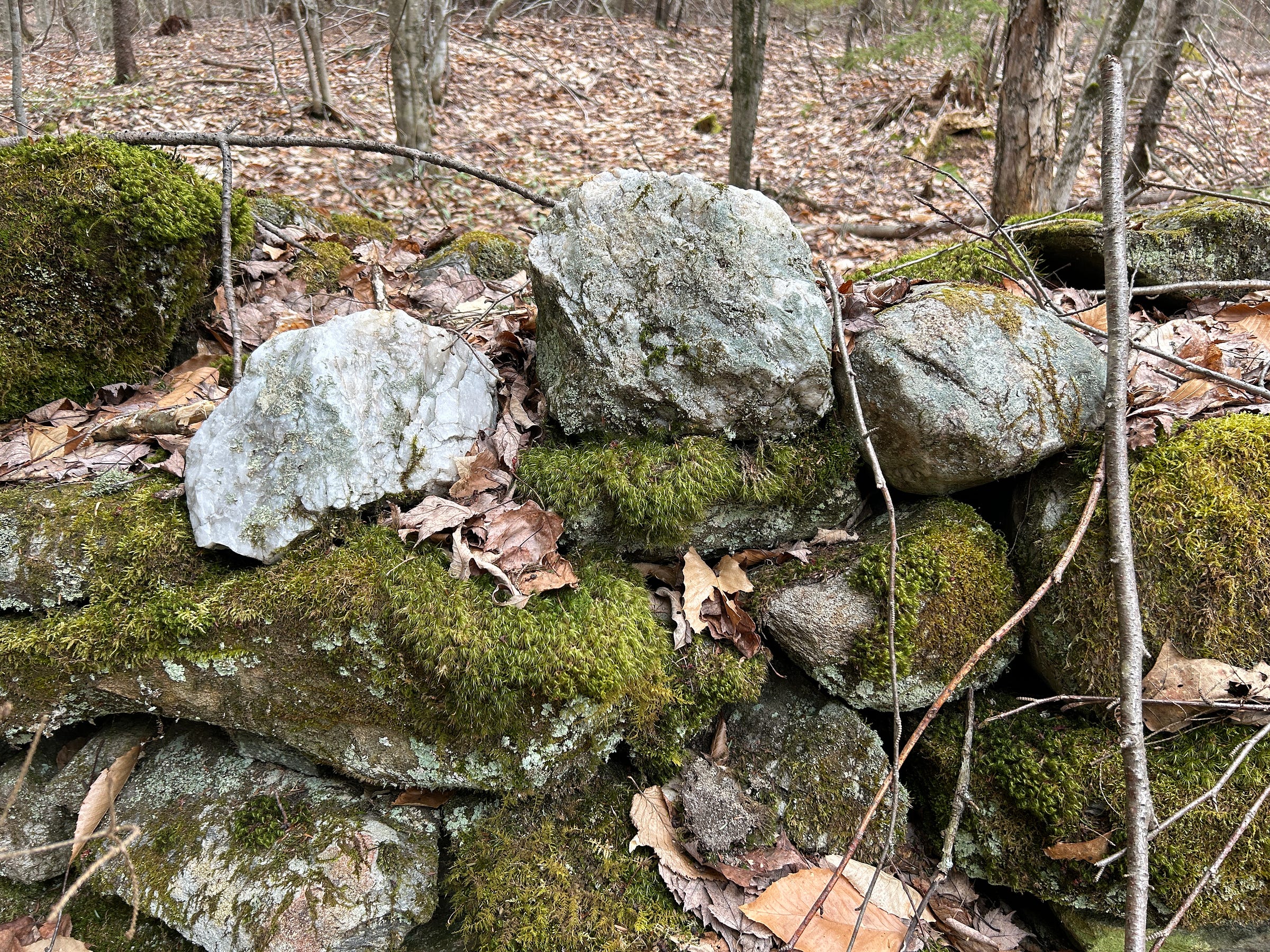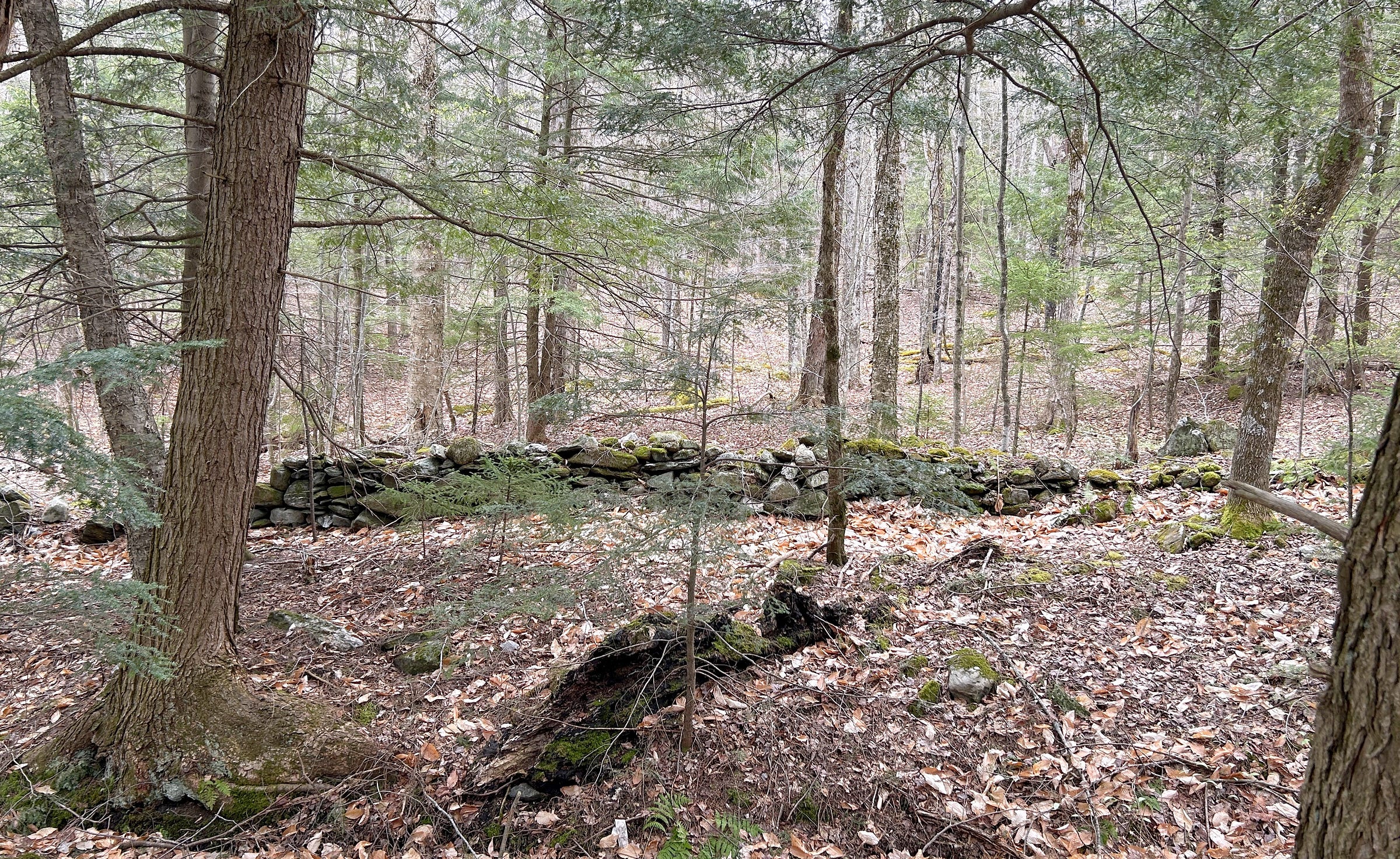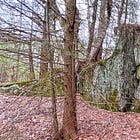This past weekend, I followed part of an old stone row, the term I use for what some call “stone walls”, deep into the woods along a trail in the Jericho and Bolton, Vermont area.
The placement of white quartz stones in and atop the stone row, and the presence of non-traditional coursework which seemed to include potential Great Serpent iconography led me to wonder about the potential for an Indigenous origin for this stone row, which some assume to be an old farmer’s construction.
That’s an understandable assumption, given Yankee Lore and the context: our forests and woods in Vermont are all pretty young, in relative terms. Agriculture cleared 80-90% of Vermont’s tree cover by the beginning of the 20th century. Many of today’s “woods” were farms, orchards and working forests 150 years ago, so stonework in the middle of nowhere now might have been part of a farm back then. Ergo, that’s gotta be a farmer’s stone wall in those woods. Right? Who else’s would it be? Well…
That’s really the big question I’m asking — is some of this stonework actually older work? Indigenous work? Was it later adapted and built upon by European settlers for their uses, giving us what is now a blended landscape?
This is not a new question, nor is it mine alone. Researchers both amateur and professional have been documenting Indigenous built stonework in New England since the 1970’s. Indigenous voices in the United South and Eastern Tribes (USET) began to pass Resolutions acknowledging and asking for help in protecting what they termed Ceremonial Stone Landscapes in the 2000’s. I’m actually a relative newcomer, having only begun looking into the question myself in 2019.
One thing I learned early in my research was that the oldest documented stone construction ever found in Massachusetts was a 4000-year-old Indigenous-built stone wall constructed as part of a Rockshelter, discovered and documented by archaeologists associated with Harvard University in the late 1970’s, in the Flagg Swamp in Marlborough, Massachusetts — there is a 4000-year-old record of the Indigenous of this area building with stone.
I grew up about a mile away from there. Played in those woods as a kid. Never knew.
Why not? Unfortunately, the stone wall and the rockshelter were dynamited to make way for a highway connector road in 1980, which speaks volumes about Massachusetts’ approach towards ancient, potentially Indigenous stonework. So does the fact that, as kids growing up in the area, we were never taught anything about this amazing discovery in our midst.
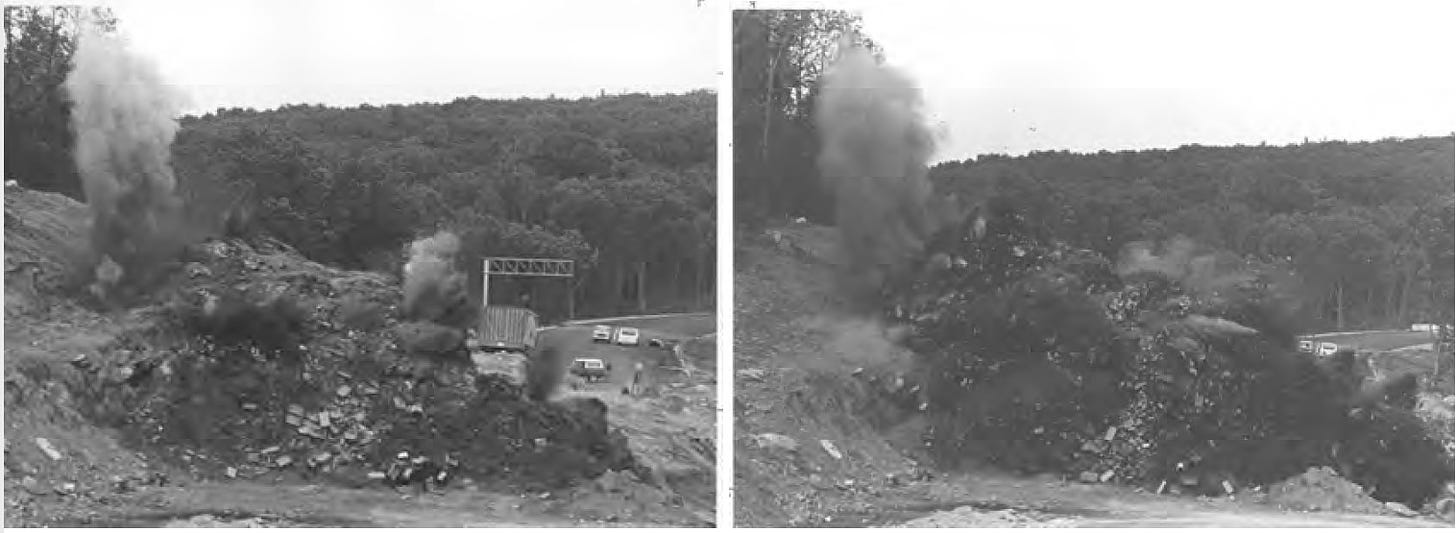
That’s Massachusetts. In Vermont, most kids in the 1970’s and ‘80’s were raised in ignorance of the Indigenous history of the area. Some were even erroneously taught in school that “no Indians ever lived in Vermont.” That sort of Yankee Lore still runs deep in parts of the state.
Thanks to work in the 1990’s, we now know Indigenous people lived in the Champlain Valley of Vermont since the end of the Ice Age, though there seems to have been a small population hiccup after the Champlain Sea recedes, in the period before a lake ecology developed. More recent discoveries in Connecticut and New Hampshire place people in New England even earlier.
Still, as you can see, the very idea of Indigenous peoples’ building stonework here — before European settlers did — challenges two underlying assumptions baked into Yankee Lore — that Indigenous peoples in the Northeast of what’s now North America didn’t build with stone and that they didn’t live in Vermont.
As Indigenous peoples had already been using the land here for agriculture and had been building Ceremonial Stone Landscapes for thousands of years, it also becomes more difficult to maintain the underlying Western cultural concept of rugged individualist settlers, “Vermonters”, taming the wild Pristine Wilderness of the Green Mountain state. What they “tamed” now seems more akin to a cultivated garden gone to seed and grown unruly with the death and displacement of its gardeners. This idea doesn’t go over well with “Vermonters”.
As a result, in Vermont and elsewhere, these are often assumed to be exclusively farmers’ stone walls. This one is assumed to have been built by a farmer at some point. But, again, I’m seeing potential Indigenous iconography in some of this stone row. And the context here turned out to be very curious, indeed.
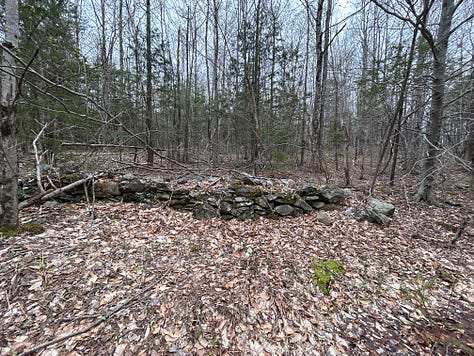


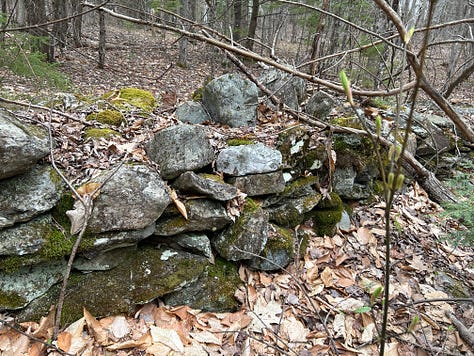

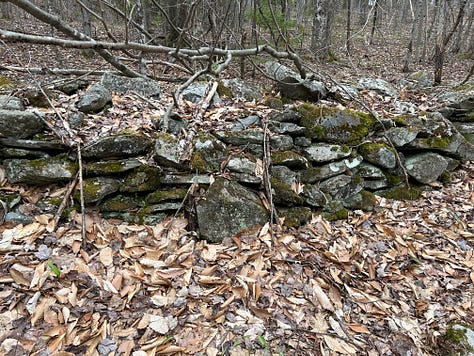
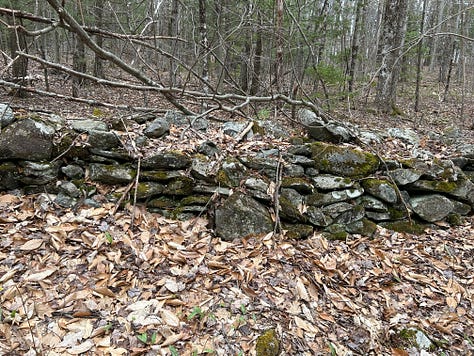
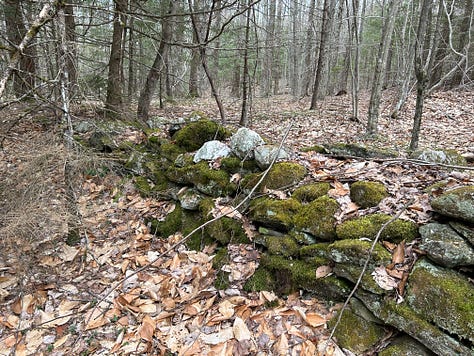
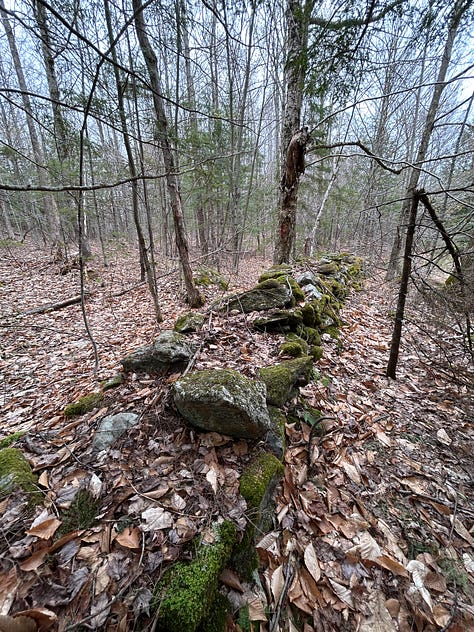
In the area nearby, there are many other stone features of possible Indigenous origin. Across the trail from this stone row, I found a number of old, collapsed cairn-like stone constructs that you’ll see in future posts, as well as the flat stone face of an outcrop which appeared to be deliberately shaped into a Fish Effigy, shared in my previous post.
Also, in this general area, some larger Cairn-Like Stone Constructs built on bedrock still exist. There is also what appears to be a settlers’ stone wall nearby, and it looks very different from this stone row. Context matters, and here it challenges many generally held assumptions and the underlying Yankee Lore.
Sharing this stone row with other Stone Site Researchers led to Tim MacSweeney of Waking Up On Turtle Island making a photo comment. He often adds eyes and antlers to photos to give a general idea of what effigies might be present in a stone row — as he did here;
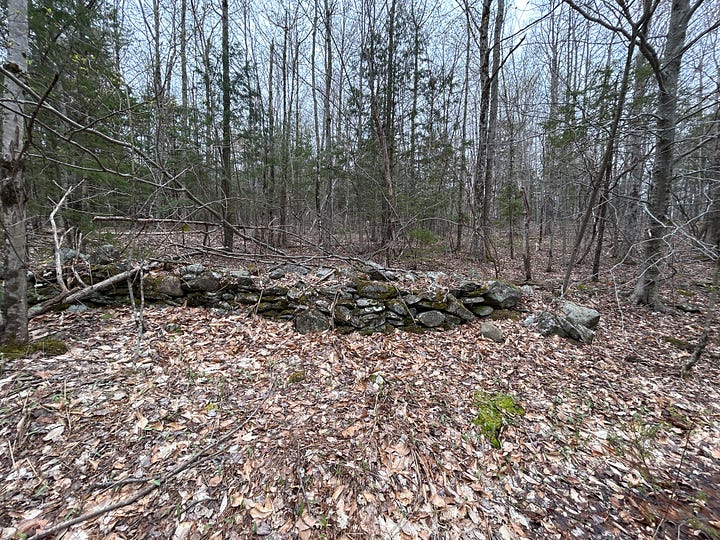
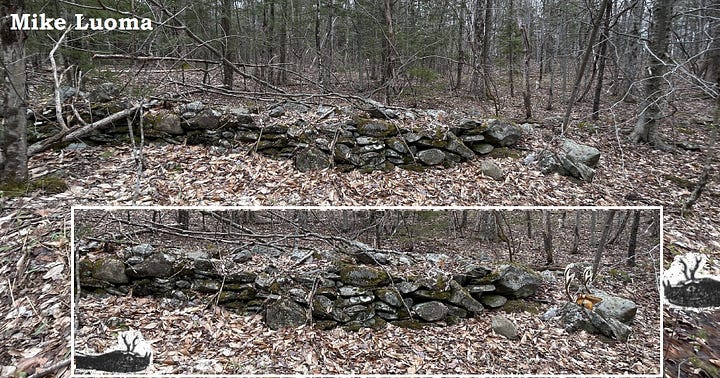
More to come from this area.






